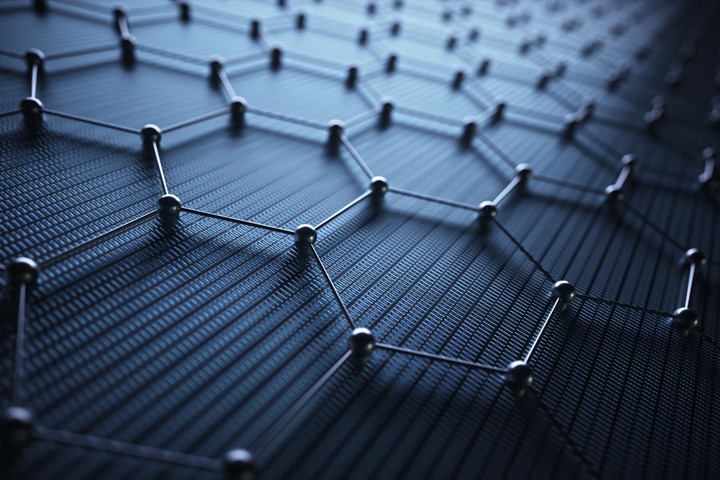International industry standard developed for graphene product verification
ISO/IEC standard enables the reliable and repeatable measurement of graphene structural properties and proper product labeling.

Photo Credit: Getty Images
NPL, the U.K.’s National Metrology Institute, in collaboration with international partners, announced on March 15 the development of an ISO/IEC standard, ISO/TS 21356-1:2021, for measuring the structural properties of graphene, typically sold as powders or in a liquid dispersion. The ISO/IEC standard enables the supply chain to answer the question ‘what is my material?’ and is based on methods developed with the University of Manchester (U.K.) in the NPL Good Practice Guide 145.
Over the last few years, NPL notes, graphene has moved from the laboratory into real-world products such as cars and smartphones (see “Graphene 101: Forms, properties and applications”). However, there is still a barrier affecting the rate of its commercialization, namely, understanding the true properties of the material. There is not just one type of material, but many, each with different properties that need matching to the many different applications where graphene can provide an improvement.
NPL add that, with hundreds of companies across the globe selling different materials labeled as ‘graphene,’ and manufacturing it in different ways, end users who want to improve their products by incorporating few-layer graphene flakes are unable to compare and subsequently select the right material for their product.
Through standardized methods to enable the reliable and repeatable measurement of properties, such as the lateral flake size, flake thickness, level of disorder and specific surface area, the new ISO/IEC standard will enable the industry to compare the many materials available and instill trust in the supply chain. In conjunction with the international ISO/IEC terminology standard led by NPL, ISO/TS 80004-13:2017, it will be possible for commercially available material to be correctly measured and labeled as graphene, few-layer graphene or graphite.
“It is exciting to see this new measurement standard now available for the growing graphene industry worldwide,” says Dr. Andrew J. Pollard, Science Area leader at NPL. “Based on rigorous metrological research, this standard will allow companies to confidently compare technical datasheets for the first time and is the first step towards verified quality control methods.”
Overall, NPL has been developing and standardizing the required metrologically robust methods for the measurement of graphene and related 2D materials to enable industry to use these materials and realize novel and improved products across many application areas.
The continuation of the NPL-led standardization work within ISO TC229 (nanotechnologies) will also enable the chemical properties of graphene-related 2D materials to be determined, as well as the structural properties for different forms of graphene material, such as CVD-grown graphene. This efforts are described in more detail in Nature Reviews Physics, including further technical discussion on the new ISO graphene measurement standard.
“Standardization is crucial for the commercialization of graphene in many different applications such as construction, water filtration, energy storage and aerospace,” adds James Baker, CEO of Graphene@Manchester. “Through this international measurement standard, companies in the U.K. and beyond will be able to accelerate the uptake of this 21st century material, now entering many significant markets.”
Related Content
-
Aernnova Composites, leader in composites R&D
This sidebar to CW’s July 2024 feature article reviews the company’s achievements and capabilities through years of composites R&D programs.
-
Mito to introduce graphene to EV energy storage innovations
Project initiatives for a multifunctional adhesive and addressing EV battery challenges are expected to change the dynamics of energy storage adoption.
-
On the radar: Reusable launch vehicles, hypersonics make space more accessible
CFRP has become key to targeting efforts in reusing components like rocket stages, as well as the development of reusable hypersonic testbeds and spaceplanes, for increasing space commercialization.













